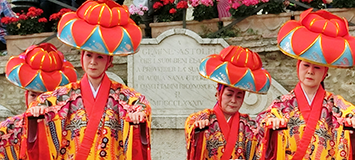SAMURAI BUILD 2F,
1-29 Katori-cho, Nakamura-ku,
Nagoya, Aichi Prefecture, Japan
The timeless beauty of ARASHIYAMA and SAGANO

ARASHIYAMA: the birthplace of the Heian culture
Arashiyama literally means “Storm Mountains” and it is located in the western part of Kyoto. Train is the best and cheapest way in order to get to Arashiyama from Kyoto (Nijo Station). It costs ¥150 – ¥230 and it takes 9 min. only!
Arashiyama is one of the most popular hanami destination and it was famous since the Heian Period (794 to 1185) when nobles enjoyed the picturesque landscape and the passing of the seasons in their luxurious villas. In the thriteenth century Emperor Go-Saga built Tenryu-ji imperial villa and transplanted many different types of cherry blossom trees from Mount Yoshino (Nara prefecture) to Arashiyama such as somei yoshino, shidarezakura and yamazakura.
Arashiyama is also famous for its foliage which starts at the beginning of November and it ends in the first week of December. Green, red and orange colors pop up on the hill offering a breathtaking view.
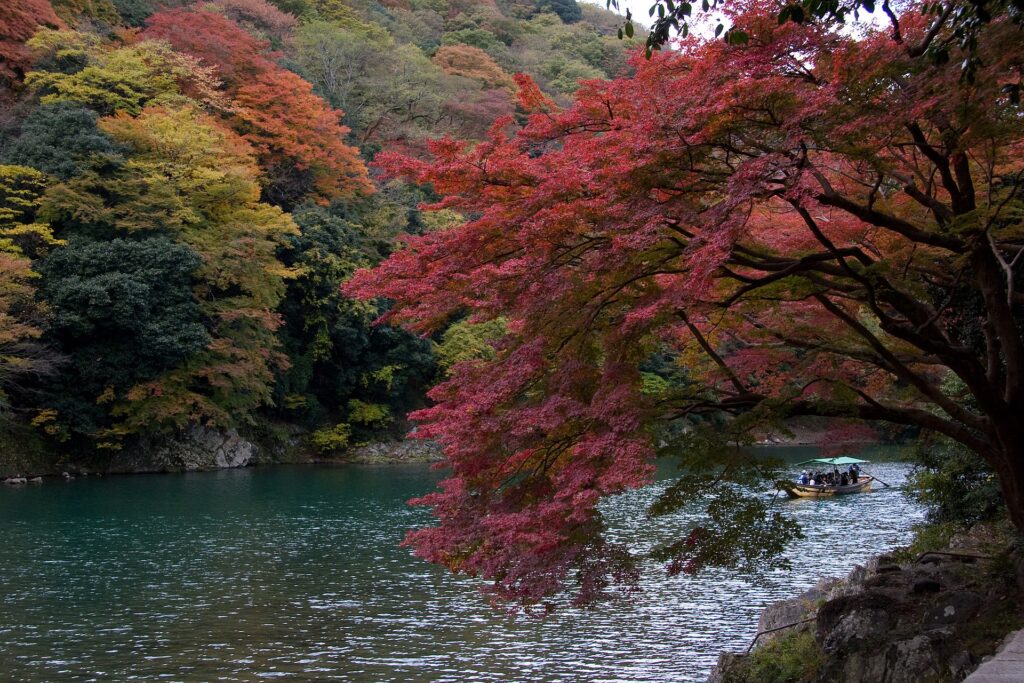
Best landmarks in Arashiyama
Crossing Moon Bridge (Togetsukyo)
Togetsukyo is a wooden 155 meter-long bridge over the Oi river. The first bridge was built in 836, while the current one was finished in 1934. Although the bridge appears to be made of wood, its columns are reinforced concrete and only the parapets are made from cypress.
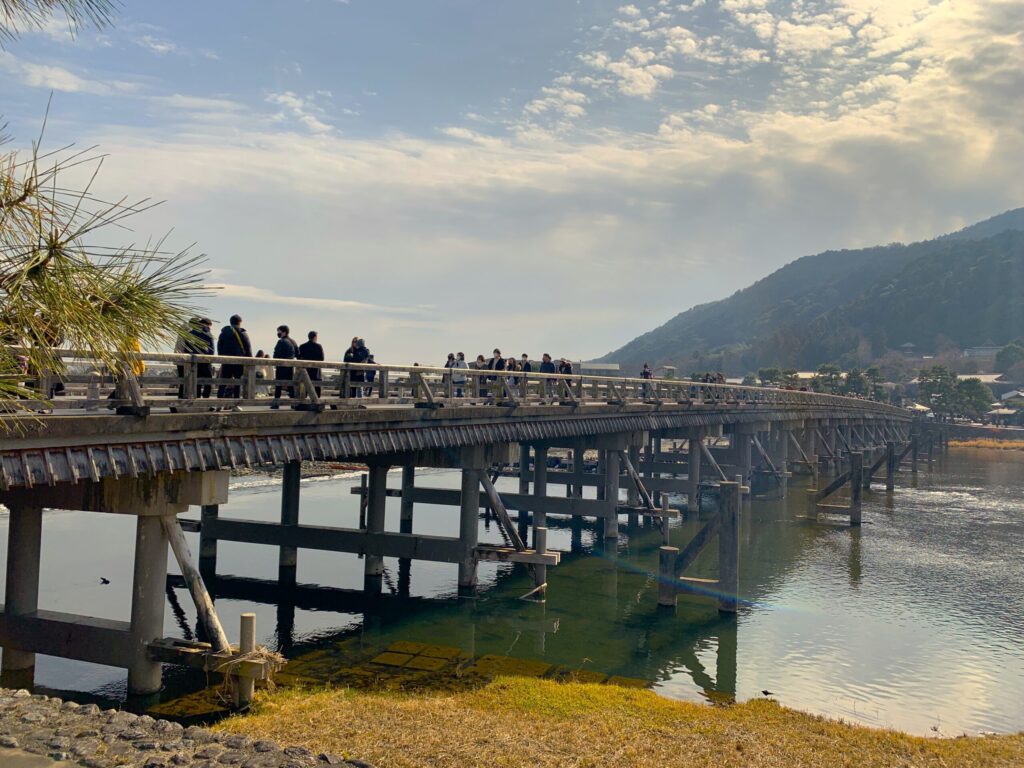
Why “Crossing the Moon Bridge”?
The Emperor Kameyama (Kamakura Period) looked at the bridge during a late-night boat ride and said:
“On this cloudless night, the full moon seems as if it is crossing the bridge.”
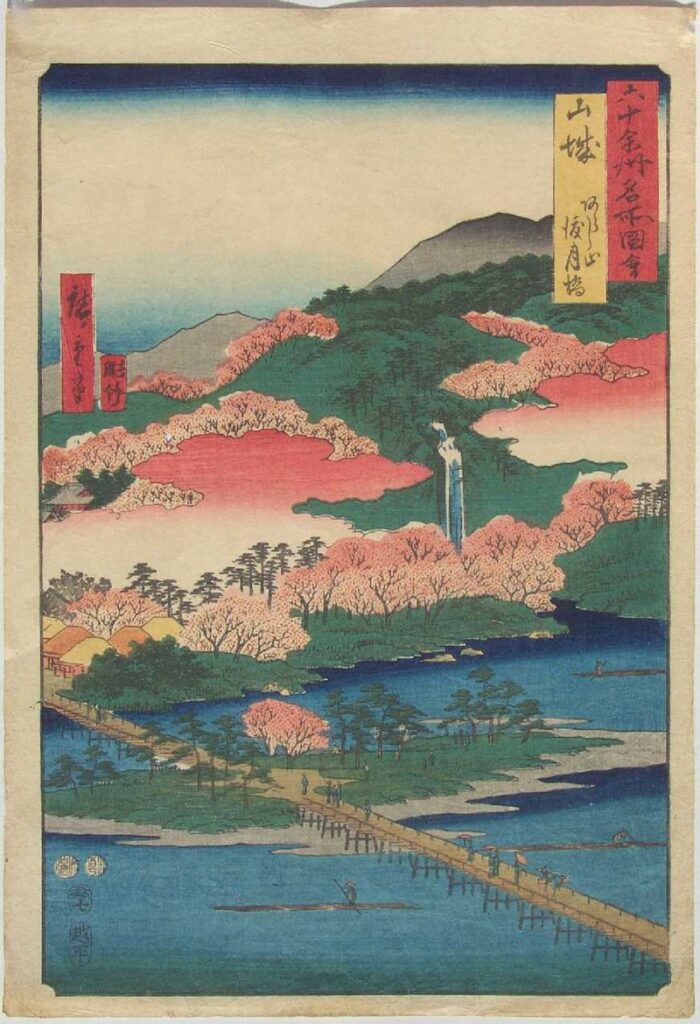
Arashiyama Monkey Park
If you love seeing animals in their natural habitat, then the Monkey Park is a must! It is located at peak of Mt. Iwata, with a height of 160m and it is home to over 120 Japanese cute macaque monkeys.
At the peak there is a rest area where you can buy some food and feed monkeys up close and admiring the amazing view of Kyoto together with them but be careful not to make direct eye contact with macaques since for primates the eye contact is an implicit signal of threat.
For fans of anime, do you know that Arashiyama Monkey Park appears also in the fourth episode of the second season of the anime K-On?

Bamboo Grove (Chikurin no Michi)
Do not be discouraged by the crowd! The Bamboo Grove is Arashiyama`s most popular spot, hence is always packed with tourists. It is a 500 meter-long path and the grove covers an area about 140 meters.

If you arrive in the early morning you can enjoy a relaxing walk in the middle of endless rows of towering bamboo. Moreover, the sound of the bamboo trees bending in the wind gives a pleasant feeling.
Tenryu-ji Zen Temple
Tenryu-ji Temple is one of the most important temples of the Rinzai School of Zen Buddhism.
In 1255, Emperor Go-Saga built an Imperial villa and in 1339, Shogun Ashikaga, founded Tenryu-ji on the villa site, to honor the recently deceased Emperor Go-Daigo. The Temple was completed in 1345.


Sogen Pond Zen Garden, was designed by Muso Soseki, a Japanese Zen master, calligraphist, poem writer, and garden designer. Included in the World Heritage Sites List, it is recognized by the government of Japan as a Special Place of Scenic Beauty.
The complex of the Temple consists of the main Temple Hall, Meditation Hall, Shion drawing room, Cloud Dragon Hall.
Okochi Sanso Villa
Okochi Sanso Villa, literally “Okochi Mountain Villa”, is located near the Bamboo Grove and it is a perfect place to escape the crowd.
Okochi Sanso is the former home and garden of the Japanese jidaigeki (period film) actor Denjiro Okochi (1898-1962) who was amous for his roles in samurai sword flicks. The area features photographs of Denjirō at work on set and videos about his life and the villa.



After his death, the Villa was opened to the public and it includes different structures: the main traditional house which combines shoin-zukuri and sukiya-zukuri styles, a tea house where you can taste a delicious matcha tea, a middle gate and Buddhist halls admist gorgeous Japanese-style gardens. The beauty of the gardens can be enjoyed throughout the year.

Kimono Forest
If you are searching for the perfect instagrammable place, then The Kimono Forest in Arashiyama is perfect! is located in Randen Arashiyama Station and it is a collection of 600 pillars housing pieces of gorgeous Kimono fabric.

After sunset, the Kimono patter lit up offering a colorful and magical atmosphere.
SAGANO: a natural jem surrounded by nature
Many tourists visit Arashiyama but most of them don’t visit Sagano, even though both of them are very close to each other. Arashiyama is always full with tourists, but Sagano is surrounded by nature, peace and tranquillity.
Sagano Romantic Train
Sagano Romantic Train is a sightseeing train line that runs along the Hozugawa River between Arashiyama and Kameoka. In this 25-minute leisurely ride you can admire the beauty of each season throughout the year.
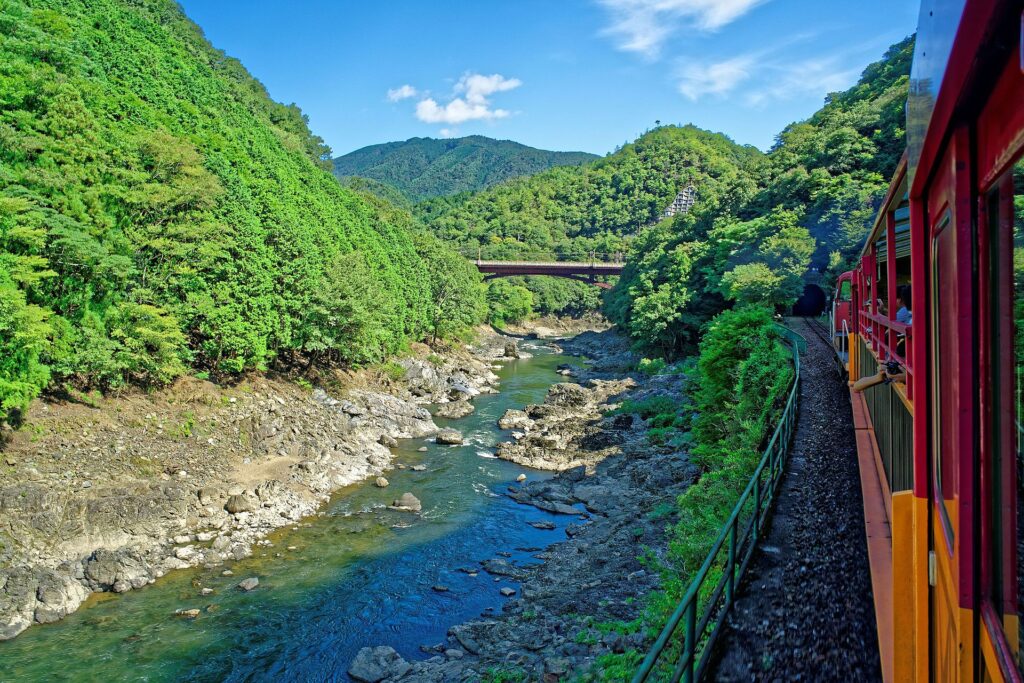
- category: Kyoto






